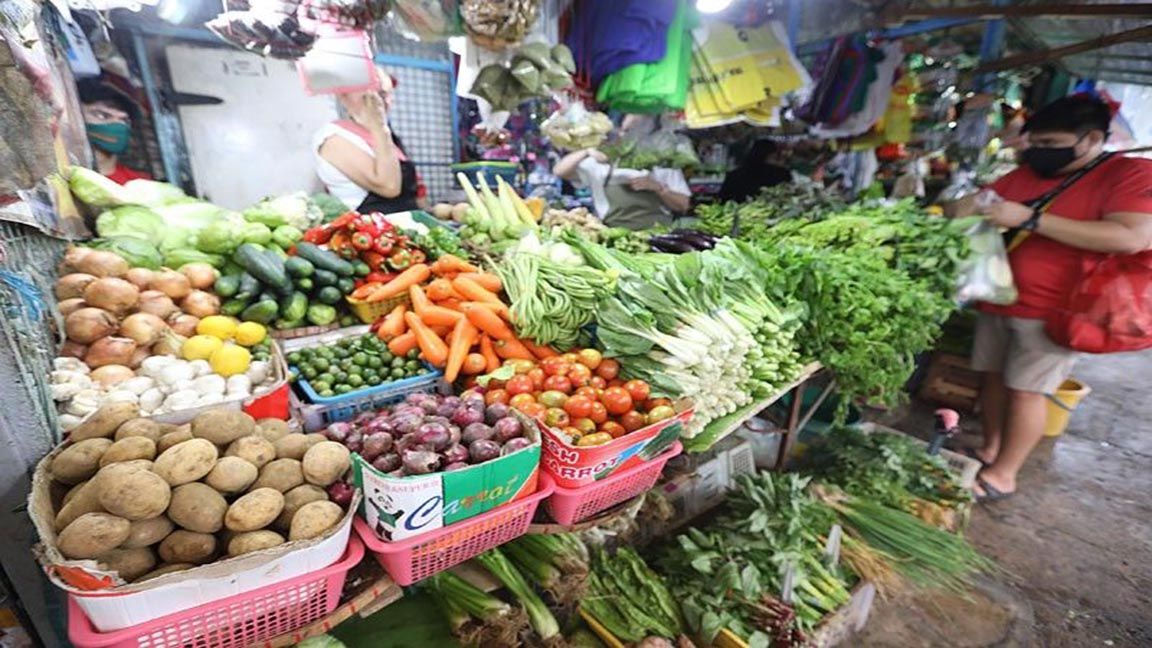Supply chain disruptions, the war in Ukraine and several global risks pose benefits for the Philippines and Southeast Asia. Local producers only need to source their inputs locally, instead of globally.
Outgoing Trade and Industry Secretary Ramon Lopez urged local producers to step up amid the global supply chain problems as he asked them to use available inputs locally, than source them globally.
“That’s why there is need to continue to make available these inputs we need; we encourage more local sourcing” because, global sourcing had become the problem “with the Ukraine issue, [and] the supply chain disruption [that is taking place] because of the difficulty in the external environment, [what’s happening] outside the Philippines,” said Lopez.
He was talking about disruptions caused by the Ukraine war, India’s export ban on wheat and rising global inflation triggered by higher interest rate regimes. He said the Philippines need to be self-sufficient in terms of food security, reported Business Mirror.
“Actually this is the opportunity for local producers to step up at sila ang magproduce at sila ang magsupply ng mga pangangailangan to show na meron din tayong supply dito at yun ang ipakita ng ating mga producers so more local sources should be encouraged whether yun ay fruits, vegetables, pork products, meat products, para in terms of supply ay meron naman tayong supply nagkakahigpitan lang kasi yung usual sourcing nila lalo na yung foreign sources dun nagkakaron ng problema,” added Lopez.
Lopez said that apart from food security issues, the country is also bearing the brunt of high logistics cost, a challenge that the Philippines has been facing, he noted, even before Russia invaded Ukraine.
Other factors
The global supply chain disruption and the external environment are nor the only reasons why prices are consistently increasing in the country, say some experts, however.
Pierre Carlo Curay, CEO/co-founder of Insight Supply Chain Solutions said last April that the Philippines has the highest logistics cost among Association of Southeast Asian Nations (Asean) members.
Curay said,
“so our logistics costs, percentage of sales is 25 percent, meaning it takes almost one-third of the cost of the product to get to you, that’s very high.”
Curay cited traffic and transportation problems as some of the culprits behind the high cost.
Earlier, Curay said
“Most of the time transport is one of the industries that’s being penalized by different policies that slows down traffic and increase cost. We have a truck ban, single lane, we have the number coding scheme—this is something that adds more burden aside from the traffic.”
To curb the country’s supply chain problems, Curay said the Philippines must eye for a “working railway.”
“However, when we develop the railway, when we push for the railway, it has to be integrated with the supply chain with the ports, with the airports, with the seaports, and you know that cuts across,” said Curay.
On seaports, he said:
“one of our recommendations again is seaports capacity adjustment, so we’ve been asking if we can spread out the distribution of the containers, not only in Manila; we decongest Manila and then put it to our North and South ports that can handle this container, transport delivery.”
The more integrated the supply chain is, the more efficient it becomes, he said.
For its part, the Philippine Chamber of Commerce and Industry, last month, also appealed to the outgoing and incoming administrations to act with urgency on the concerns besetting our transportation and logistics industry to curb further economic problems.
PCCI President George T. Barcelon emphasized that transportation and logistics are essential to sustaining economic gains and building on the reform measures meant to make the country attractive to investments and conducive to jobs-creating activities.
Supply snarls beneficial for SEA
Bloomberg said trade disruptions from China’s lockdowns and the war in Ukraine are seen doing for Southeast Asia what the US’ spat with Beijing couldn’t meaningfully do—redistribute supply chains.
“Much of the discussion around dependency on China has been linked to the US-China rivalry,” according to a report by Hinrich Foundation. But the latest “disruptions have broadened the number of countries currently assessing the risks to their supplies.”
This time around, Japan and European Union (EU) members are looking to secure supply linkages without increasing cost, wrote Stewart Paterson, the report’s author and research fellow at the Asia-based foundation set up by US entrepreneur Merle Hinrich to promote sustainable global trade.
The EU and Japan each account for about 12 percent of total direct investment flows into Southeast Asia for the past five years, compared with China’s 8% share, according to the report. With a per capita gross domestic product (GDP) of $4,500, the 10-member bloc of the Association of Southeast Asian Nations (ASEAN) is also a “far less costly source of labor than China,” Paterson wrote.
Another reason that sets apart the US-led efforts earlier to reduce dependence on China from what’s happening now is the relation between the state and the companies, he said. Unlike in the US where multinational corporations are “notoriously independent” from government-set agendas, the linkages run much deeper in the EU and Japan.
“The passing of Japan’s new Economic Security Law and the EU’s Global Gateway policy are the most recent manifestations of close government-corporate cooperation in industrial policy,” Mr. Paterson said.
Here are some more key points from the report:
ASEAN’s export performance between 2016 and 2020 has more or less matched that of China. The bloc’s exports grew by 21 percent to $1.39 trillion during the period, while China’s grew by 23% to $2.59 trillion.
The ASEAN bloc has been enmeshed in the global trading system and has trade-to-GDP ratios well above the global average.
Currently, much of the growth in ASEAN trade has been with China itself. The bloc’s exports to China grew by 51 percent between in the four years to 2020, while exports to the rest of the world grew by 16 percent.
Tags: #supplychainsnarls, #outgoingDTISec.Lopez, #foodsecurity, #sourcelocally, #trade
